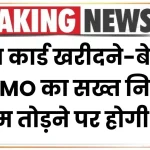
6 Rare Coins: Coins have always been more than just currency. Throughout history, rare coins have captured the imagination of collectors, historians, and investors alike. Some of these treasures are so rare that their value skyrockets into the millions – or even billions! Could you unknowingly own one of these extraordinary coins? Let’s dive into the fascinating world of rare coins, explore their value, and understand why they hold such prestige in the numismatic world.
6 Rare Coins:
| Key Point | Details |
|---|---|
| Most Expensive Coin Ever Sold | The 1933 Double Eagle sold for $18.9 million in 2021. |
| Rarest Coins | 1794 Flowing Hair Dollar, 1787 Brasher Doubloon, 1933 Double Eagle. |
| Factors Driving Value | Rarity, historical significance, minting errors, condition, and demand. |
| How to Check Your Coins | Look for specific mint years, errors, and certifications. Consult experts or use coin appraisal services. |
| Top Resources for Collectors | Professional Numismatists Guild |
Rare coins are fascinating collectibles that bridge the past and present. Whether you’re a seasoned collector or just starting out, understanding what makes these coins valuable is the first step in uncovering hidden treasures. If you suspect you own a rare coin, don’t hesitate to consult experts, research its history, and dive deeper into the exciting world of numismatics. Remember, every coin tells a story – could your collection hold the next million-dollar treasure?
Why Are Rare Coins So Valuable?
Rare coins are more than just metal; they are pieces of history. Collectors prize coins for their:
- Rarity: The scarcer the coin, the higher its value.
- Historical Significance: Coins like the 1794 Flowing Hair Dollar represent pivotal moments in history.
- Minting Errors: Coins with unique imperfections due to minting mistakes are highly sought after.
- Condition: A pristine, well-preserved coin fetches a premium price.
- Demand: The more collectors desire a coin, the higher its market value.
1. The 1933 Double Eagle – $18.9 Million
The 1933 Double Eagle is a true icon of numismatics. Originally intended for circulation, almost all were melted down after the U.S. abandoned the gold standard. A few escaped destruction, and one of these coins was sold for a record-breaking $18.9 million in 2021. Its mystique lies not just in its rarity but in the legal battles and fascinating stories surrounding its survival.
2. The 1794 Flowing Hair Dollar – $12 Million
Believed to be among the first silver dollars ever minted in the United States, the 1794 Flowing Hair Dollar is a masterpiece. Its rarity and historical importance make it one of the most coveted coins in the world. Scholars believe that this coin may have been among the very first struck, potentially making it a direct link to the beginnings of the U.S. monetary system.
3. The 1787 Brasher Doubloon – $9.36 Million
Minted by a private goldsmith, this coin’s unique story and exceptional craftsmanship have made it a legend. It embodies the entrepreneurial spirit of early America. What makes this coin even more remarkable is the distinctive “EB” punch, marking it as the handiwork of Ephraim Brasher, a silversmith whose legacy is intertwined with the founding days of the United States.
4. The 1943 Copper Penny – $1.7 Million
While the U.S. government switched to steel pennies during World War II, a few copper pennies were mistakenly struck. These coins are incredibly rare, with only a handful known to exist today. Their value is further elevated by the historical context of wartime America and the mystery surrounding how they came to be.
5. The 1913 Liberty Head Nickel – $4.5 Million
This coin is shrouded in intrigue, as no official records exist of its production. Only five are known to exist, and each one has a fascinating backstory. This coin’s value lies not just in its rarity but in its mysterious origins, making it a must-have for high-end collectors.
6. The 2007 $1 Million Canadian Gold Maple Leaf – $4 Million
This modern marvel is a testament to advanced minting techniques. Weighing 100 kilograms of pure gold, it’s not just a coin but a statement of Canadian craftsmanship and excellence. Its limited production run and unique specifications have cemented its place in the world of numismatics.
How to Identify Rare Coins in Your Collection
If you have a collection of coins, it’s worth checking for hidden gems. Here are step-by-step tips to help you identify potentially valuable coins:
Step 1: Examine the Year and Mint Mark
Rare coins often have specific years or mint marks that distinguish them from the rest. For example:
- The 1943 copper penny.
- The 1913 Liberty Head nickel.
The mint mark indicates where the coin was produced and can be found on the coin’s face. Coins from certain mints or specific production years are especially valuable.
Step 2: Look for Minting Errors
Coins with errors, such as double strikes, off-center images, or incorrect dates, are often highly valuable. These imperfections make them unique and desirable. Examples include the 1955 Doubled Die Penny and the 2004 Wisconsin Extra Leaf Quarter.
Step 3: Assess the Condition
The condition of a coin significantly affects its value. Collectors use a grading scale from 1 (poor) to 70 (perfect). Coins with sharp details and no visible wear fetch higher prices. For example, a 1794 Flowing Hair Dollar graded “MS-66” (Mint State) fetched millions due to its near-perfect preservation.
Step 4: Get Expert Appraisal
Once you’ve identified a potentially valuable coin, have it appraised by a certified numismatist or a trusted coin dealer. Organizations like the Professional Coin Grading Service (PCGS) or Numismatic Guaranty Corporation (NGC) can provide authentication and grading services. You can also visit coin shows or join numismatic associations to network with other enthusiasts.
Step 5: Research Online Resources
Several online platforms and databases offer tools for identifying and valuing coins. Websites like NumisMedia and CoinTrackers provide up-to-date pricing guides, while auction sites like Heritage Auctions showcase historical sales data.
Tips for Selling Rare Coins
Selling a rare coin can be an exciting yet daunting process. Follow these practical tips to ensure you get the best deal:
- Authenticate Your Coin: Certification from a reputable grading service is essential.
- Research Its Value: Check auction records, market trends, and online resources to estimate its worth. Knowledge is power when negotiating with potential buyers.
- Choose the Right Marketplace: Options include auction houses, online platforms like eBay, or specialized coin dealers. Each has its pros and cons, so choose based on the coin’s value and your comfort level.
- Negotiate Smartly: If selling to a dealer, don’t hesitate to negotiate or seek multiple offers. A second opinion can often lead to a better deal.
- Leverage Social Media and Forums: Online communities of coin collectors can provide valuable insights and potential buyers. Platforms like Reddit’s r/coins or dedicated Facebook groups are great starting points.
The $3M Bicentennial Quarter and 4 Coins Over $300K – How to Spot These Rare Treasures!
Are You Holding a $70 Million Fortune? These Rare Coins Could Be Hiding in Your Collection!
This Quarter Is Worth $8M! Plus 2 More Coins Valued Over $45 Million
Frequently Asked Questions About 6 Rare Coins
Q1: How do I know if my coin is valuable?
Start by checking its year, mint mark, and condition. Rare years, minting errors, and well-preserved coins are key indicators of value. For example, the 1943 copper penny stands out due to its unique year of minting.
Q2: Where can I get my coin appraised?
You can consult organizations like the Professional Numismatists Guild or visit a certified coin dealer in your area. Many grading services, like PCGS or NGC, also offer online submission options.
Q3: Are modern coins ever valuable?
Yes! Coins with minting errors or special editions, like proof coins, can have significant value. For example, the 2000 Sacagawea Dollar with a “mule” error is highly sought after.
Q4: How should I store rare coins?
Store coins in protective cases or sleeves in a cool, dry environment to prevent damage. Avoid touching them directly to maintain their condition. Consider investing in a temperature-controlled safe for long-term storage.
Q5: What is the best way to start a coin collection?
Begin by focusing on a specific type of coin, such as quarters or silver dollars. Educate yourself through books, online resources, and numismatic groups. Starting with lower-value coins can help you learn without significant financial risk.











